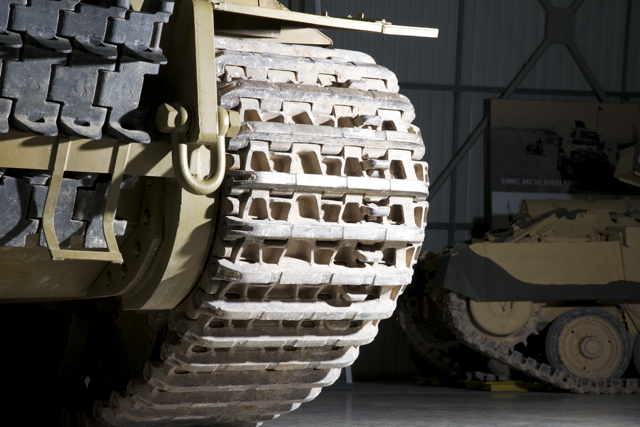An interview with David Jardine-Skears from The Tank Museum at Bovington on one of the most technologically advanced tanks of the World War 2, the Tiger.
What role did the Tiger 1 have in the Wehrmacht?
The Tiger 1 was designated as a heavy tank and was used as a line breaker unit to defeat defensive lines. Its heavy armour gave it a great deal of resistance against enemy tank fire. By the time it was released onto the battlefield, the Germans were in retreat so it was primarily used in a defensive capacity. It was put into superior positions like hilltops and open fields where it could use its heavy armour to defend itself and use its accurate and powerful gun to knock out tanks at long-range.
Where was its armour thickest? Did it have weak armour at the back?
The armour on the front and the lower plates was 100mm thick. The lower plate was angled at 25 degrees, which effectively increased its thickness further. On the sides and the rear, the armour was 80mm thick. The tank is actually at its weakest on top of the hull and turret where it is only 25mm thick.
When the Tiger was introduced, the allies had no weapons in their arsenal that could penetrate the armour from over 100 yards away. 6.5 shots at close range would be needed to register a penetrating hit. The Sherman Firefly 17 pounder antitank gun could penetrate 100mm of armour after its introduction later in the war, as could the French armour piercing discarding sabot (APDS) rounds.
What were the conditions like inside and what would each member of the crew do?
There was a crew of five. You had a driver, a radio operator who also mounted the MG34 machine gun, a commander, a gunner and a loader.
How were its weaknesses exposed against the T-34 on the Eastern Front?
Despite its very wide tracks, the sheer weight of the vehicle (58 tons compared to the 32 ton T-34), made the Tiger prone to be being bogged down. The big problem in particular was the mud getting stuck and freezing in between the tracks overnight. Its weight meant the 650hp V12 engines were very underpowered. You needed an experienced crew to man the Tiger properly, which the Germans simply didn’t have towards the end of the war.
Did it have any mechanical flaws?
The telling factor is the production numbers. Between 1942 and 1944, the Germans only produced 1,558 Tigers. Compare that to 40,000 Shermans and up to 70,000 T-34s. The Germans spent of a lot of time and money sourcing the best materials for the best companies. All the equipment was very high quality but this was a drawback when producing numbers. It was just far too sophisticated to produce in as high quantity as the Shermans and T-34s.
Why was it replaced by the Tiger II?
The Tiger II was certainly an evolution. The suspension and wheel layout was very similar as was the sloping armour. It was a larger tank so it mounted a much larger gun. The Tiger II cannon was basically the anti-aircraft gun that they used at the beginning of the war. This was the 88mm that could penetrate 140mm of armour from 2,000 yards or less.
For more secrets on the Nazi war machine, pick up the latest issue of History of War.



